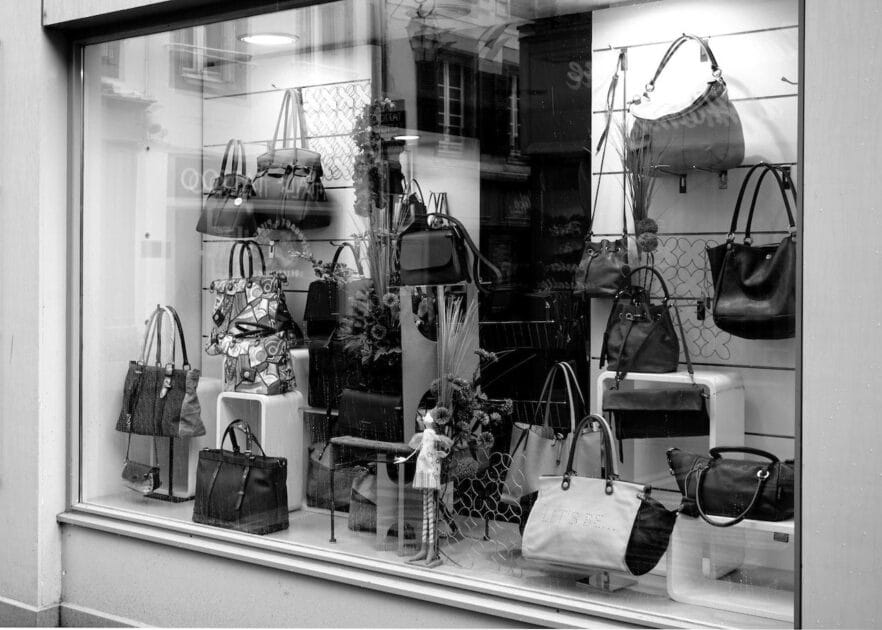Ever found yourself at the check-in counter, juggling between your hand luggage and handbag, wondering if both can fly with you in the cabin? You’re not alone! Navigating the rules of carry-on luggage can feel like cracking a secret code.

But don’t sweat it! Whether you’re a seasoned traveler or gearing up for your first flight, understanding the ins and outs of airline luggage policies is key to a stress-free journey. Let’s dive into the essentials of taking both a handbag and hand luggage on your next flight.
Hand Luggage and Handbag: Can You Bring Both?
Absolutely, in most cases, you’re allowed to bring both a piece of hand luggage and a handbag on board. It’s crucial to distinguish between the two. Hand luggage is typically the larger item like a rolling suitcase or a backpack, sized to fit in the overhead bin. Meanwhile, your handbag—which could be a purse, briefcase, or tote—is considered a personal item intended to go under the seat in front of you.
Airlines often have clear guidelines detailing acceptable dimensions and weight limits for both. For example, you might encounter restrictions stating your hand luggage can’t exceed 22 inches by 14 inches by 9 inches. Your personal item’s size varies between airlines but typically falls around 18 inches by 14 inches by 8 inches. These sizes ensure your handbag doesn’t hog too much cabin space.
Here’s a quick breakdown showing typical size limits:
| Item | Typical Size Limit (inches) |
|---|---|
| Hand Luggage | 22 x 14 x 9 |
| Handbag | 18 x 14 x 8 |
Before you pack, check your airline’s policy. They’ll specify whether you can bring both items. Budget airlines can be stricter, sometimes allowing only one piece unless you pay for additional privileges.
When it comes to international flights, rules might be different. More generous allowances are common with premium tickets, while economy might be more restrictive. Keep this in mind as ticket class can affect your packing strategy.
Certain items inside your handbag might need extra attention during security checks. Electronics, liquids, and sharp objects all have specific regulations. To streamline your airport experience, keep these items easily accessible for screening.
Remember, if your hand luggage is maxed out, don’t assume there’s wiggle room in your handbag’s size. Overstuffing could mean gate-checking one of your items, which you want to avoid. Always aim for a balance that respects the guidelines and keeps your travel hassle-free.
Understanding Airline Luggage Policies
When you’re planning your trip, knowing the luggage policies of your airline is a must. Airlines differ in their allowances and restrictions. It’s not just about size and weight; it’s the type of luggage too.
First off, check the airline’s policy online or give them a quick call. Every airline has a page detailing what you can bring. Remember, policies may change, so verify every time you fly. You’ll want to avoid any surprise fees.
Here’s a tip: sign up for the airline’s loyalty program. Frequent flyers sometimes get perks like increased luggage allowances. It’s worth looking into, especially if you’re a frequent traveler.
Keep an eye on hand luggage dimensions:
- Width
- Height
- Depth
These vary from one airline to another but hover around 22 x 14 x 9 inches for most. Still, check your airline’s specific regulations.
For handbags, the key is to keep it compact. Think about fitting it under the seat in front of you. If you’re in doubt about the size of your handbag, use a tape measure. It’s better to know it’ll fit rather than facing gate-checking.
Is your flight international? Double-check the regulations. International flights can be stricter, and sometimes the country you’re visiting has specific rules.
And remember, the hand luggage is for your overhead compartment, the handbag goes under your seat. If your hand luggage looks too big or bulky, even if it fits the size limits, you might be asked to check it in.
Budget airlines tend to be the strictest. They can have policies that differ significantly from major carriers. With these airlines, it often pays to travel light. Read their terms thoroughly to avoid extra charges.
Lastly, certain items in your handbag require extra attention due to security regulations. Liquids, gels, and aerosols need to be in containers of 3.4 ounces or less and within a clear, quart-sized bag. Stick to these rules, and you’ll breeze through security.
What Qualifies as Hand Luggage?
« Can You Claim Handbag on Tax? Unlock the Secrets to Fashion Expense Deductions
How to Repair Handbag Zipper: Quick Fixes to Common Issues »
When you’re jet-setting, understanding what qualifies as hand luggage is crucial. Think of it as your travel companion that sits in the overhead bin or under the seat in front of you. Airlines define hand luggage—also known as carry-on luggage—by its size, weight, and the number of pieces you’re allowed to bring on board.
Most carriers have similar size requirements, typically measuring 22 x 14 x 9 inches. Remember, this dimension includes wheels, handles, and side pockets—every inch counts. Your bag must fit comfortably into the airline’s baggage sizer, and if it doesn’t, you might have to check it in and, possibly, face additional fees.
Weight limits for carry-on bags can range from about 15 to 22 pounds. These restrictions are strictly enforced, especially on full flights or smaller aircraft. When in doubt, always aim for lighter luggage—you don’t want to be caught off guard at the gate.
Here are the general carry-on baggage policies from some popular airlines for reference:
| Airline | Size Limit (inches) | Weight Limit (pounds) |
|---|---|---|
| Delta Air Lines | 22 x 14 x 9 | No set limit |
| United Airlines | 22 x 14 x 9 | 35 |
| American Airlines | 22 x 14 x 9 | No set limit |
| Southwest Airlines | 24 x 16 x 10 | No set limit |
These are just examples; always do your due diligence and verify with the specific airline you’re flying with.
What about a handbag? Typically, you’re allowed a small personal item in addition to your hand luggage. A handbag qualifies if it can fit under the seat. The key is dual compliance—adhering to the airline’s hand luggage policy while ensuring your handbag doesn’t exceed personal item limitations.
For fashion enthusiasts, this means picking a sleek, compact bag that maximizes space without compromising style. Whether it’s a designer purse or a multipurpose tote, streamlining your hand luggage and handbag ensures a hassle-free boarding process. Remember, practicality and fashion can coexist even at 30,000 feet.
What Qualifies as a Handbag?
Understanding what constitutes a handbag is crucial when you’re planning to hit the skies. Generally, a handbag is a small bag used primarily for carrying personal items like your wallet, keys, and phone. In the context of airline travel, it’s a bit more specific.
Firstly, think size. Your handbag ought to be compact enough to fit under the seat in front of you. If it’s too large to squeeze in, it’s not considered a handbag by most airlines. Typically, dimensions should not exceed 18 x 14 x 8 inches, but always check your airline’s guidelines to avoid any surprises at the gate.
Material matters, too. While your daily leather or designer fabric handbag is acceptable, so are other materials like nylon or canvas. What’s important is the function—can it carry your personal items without becoming bulky or cumbersome?
Do remember that features matter. A handbag usually has a main compartment, and possibly a few small pockets or zippers for organization. It’s not about the number of pockets but the overall design. The bag must maintain a slim profile even when it’s packed with your essentials.
Lastly, appearance is key. The handbag should look like a handbag, not a duffel or miniature suitcase. The design, from straps to closure, should align with something you’d carry to dinner, not the gym.
- Slim Profile
- Compact Size
- Traditional Materials
- Handbag-Appearing Features
Stick to these criteria, and you’ll breeze through boarding with your handbag by your side. It’s all about finding that perfect balance between style and functionality that adheres to airline regulations. With these parameters in mind, you’ll select a handbag that’s not only chic but travel-ready.
The Dos and Don’ts of Packing Your Carry-Ons
When it’s time to pack your carry-on and handbag, you want to do it right. Here’s a quick guide to make sure your essentials are with you and you’re flying comfortably.
Do check your airline’s carry-on size and weight restrictions. You’ll find this info on the airline’s website or your ticket. This is non-negotiable; if your bag’s too big or too heavy, you may have to check it.
Don’t forget the liquids rule. Liquids in your carry-on must be in containers of 3.4 ounces (100 milliliters) or less. They must fit in a single, transparent, quart-sized bag. That’s for all your travel-size toiletries and perfumes.
Do pack items you’ll need during your flight at the top of your carry-on. Think about what you’ll want easy access to—headphones, books, or perhaps a sleep mask.
Don’t overpack. Overstuffed bags are harder to close after that security check, and they can push you over your weight limit.
Do use your handbag wisely. It’s your personal item, so make it count. Essentials like travel documents, money, and medications should go in there.
Don’t ignore organization. Use pouches and compartments to keep things in order. It makes getting through security a breeze.
Do keep electronics in an easy-to-reach place. Laptops and tablets often need to be removed for screening.
Don’t bring prohibited items. Check the TSA’s list before you pack. Sharp objects, firearms, and certain tools won’t fly in your carry-on.
Remember, smart packing is as much about what you don’t bring as what you do. Keeping your carry-on and handbag organized saves time and hassle, letting you breeze through the airport and enjoy your journey. Keep these points in mind, and you’re set for a smooth takeoff.
Conclusion
You’ve got the scoop on navigating the skies with your carry-on and handbag. Remember, staying informed about your airline’s specific luggage rules will save you from any travel day surprises. Pack smart, keeping those essentials within easy reach and your journey will be a breeze. Safe travels and here’s to your next adventure, with everything you need right by your side!
Frequently Asked Questions
What are the typical size and weight restrictions for carry-on luggage?
Most airlines have carry-on size limits of 22″ x 14″ x 9″ and weight restrictions around 15-22 pounds. Always check with your specific airline for their exact guidelines.
Can signing up for an airline’s loyalty program increase my luggage allowance?
Yes, being a member of an airline’s loyalty program can often grant you increased luggage allowances and other travel benefits.
How do I ensure my handbag fits under the seat?
Check your airline’s handbag dimension requirements which generally stipulate that the bag must be compact enough to fit under the seat in front of you.
What qualifies a handbag as a personal item?
A personal item is typically defined as a handbag that can fit under the seat in front of you and is used to carry essentials that you might need during the flight.
What are the dos and don’ts for packing a carry-on bag?
Do check airline restrictions, follow the liquids rule (3-1-1), pack essentials at the top, and use your handbag wisely. Don’t overpack and be aware of prohibited items.
Why is it important to keep electronics in mind when packing carry-ons?
Electronics should be easily accessible for security checks and in case of battery restrictions. It’s also crucial to keep them safely stored to prevent damage during travel.
What is the advantage of smart packing?
Smart packing ensures you are adhering to airline regulations, which helps to avoid extra fees or baggage check issues, resulting in a smoother travel experience.









